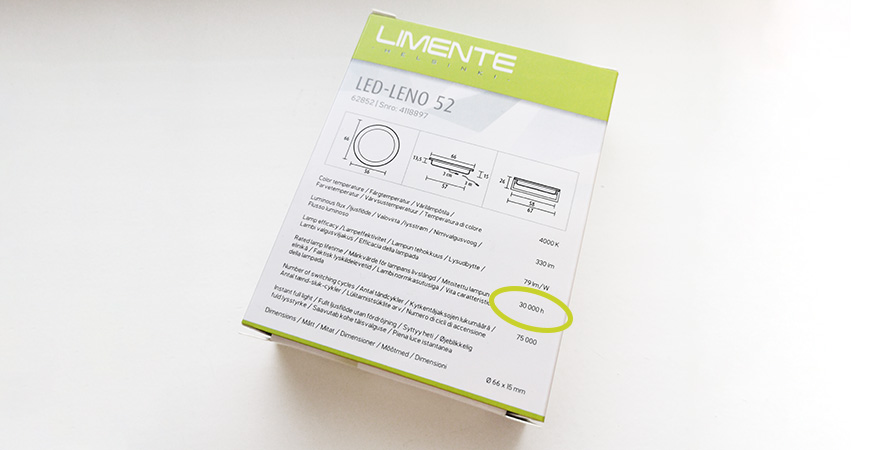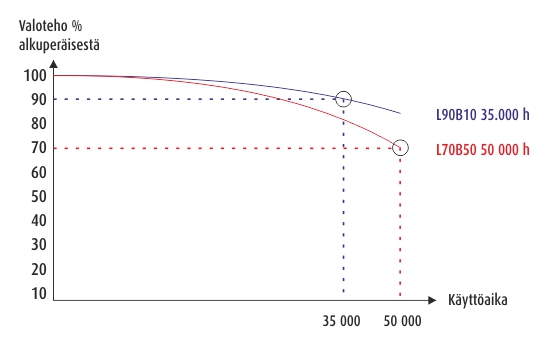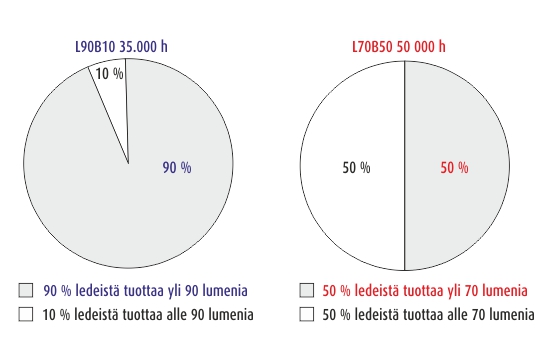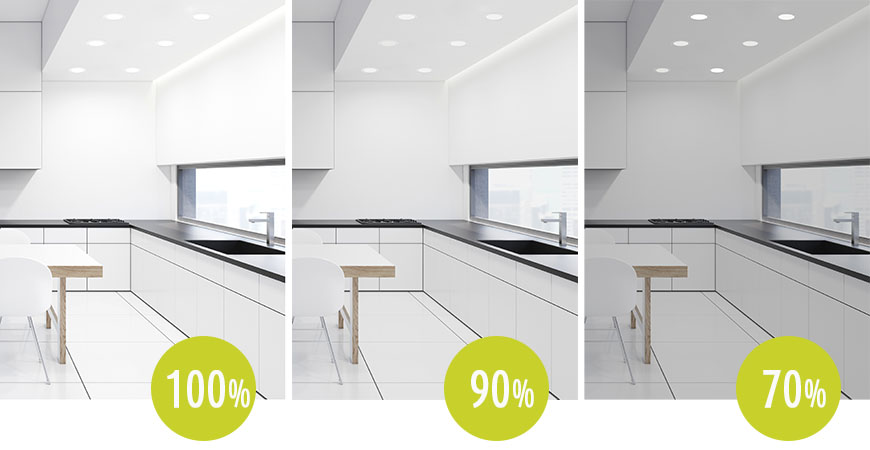No products
Prices are tax included
Lifespan of led
Lifespan refers to the average rated life of a light bulb and is calculated in different ways depending on the type of the light bulb. An incandescent light bulb is as bright when it dies as it was the first time it was switched on and the reduction of light (as luminosity is reducing with time) is practically irrelevant. LEDs with a significantly longer lifespan will slowly decrease in luminosity over time. This means that, at the end of its life, the LED module has not died, but its luminosity has decreased below the stated level.
The stated lifespan of the light fixture is related to the light fixture itself – not the electrical ballast, which usually has a shorter lifetime than the LED light fixture.
L value
L value indicates how much of the original luminous flux is still remaining after a certain time. The L value is defined as the time after which the luminous flux produced by the LED is a certain percentage of the original luminous flux, i.e. it defines the percentage of lumen comparing with the initial lumens.
For example, L70 = the LED is producing 70% of the original luminous flux and L90 = 90% respectively.
When reporting the lifespan of an LED, L70, L80 and L90 are used as markers to indicate the decrease in luminous flux.

A more common designation is L70 = 50,000 H, which indicates that after 50,000 hours of use, the luminous flux of the LED is 70% of the original. The percentage of died LEDs is not indicated.
It’s important to pay attention to what exactly is the value you’re dealing with. The figure below represents how 50,000 h stated as L70B50 is a considerably worse lifespan than 35,000 h stated as L90B10.

B value
B value is used in addition to the L value to indicate how much of the module’s LEDs have a luminosity below the L value. B value indicates more about LED quality, whereas L value indicates more about lifespan. The B value is very important when designing lighting, since died LEDs can be disturbingly visible when the light fixture is switched on.
For example, an LED light strip can have 100 LEDs. This means that L90B10 indicates that a maximum of 10 LEDs have a light output of less than 90% of the original, while L70B50 indicates that a maximum of 50 LEDs (or half of all the LEDs) have a light output of less than 70%.
Two typical examples are presented below. In the figure, it’s assumed that the initial luminosity is 100 Lumens and the values are the light at the stated lifespan.
L70B50 50 000 h
- 70 % of the light remains and up to 50% of the LEDs have a light output of less than 70%
- The total light output of the light fixture may have decreased by up to 30% of the original
- That is, half of the LED modules provide more than 70% of the original light and the rest may have died or provide from 0% to 70% of the original light.
L90B10 35 000 h
- 90 % of the light remains and up to 10% of the LEDs have a light output of less than 90%
- The total light output of the light fixture may have decreased by only 10% of the original
- That is, 90% of the LED modules provide more than 90% of the original light and 10% may have died or provide from 0% to 90% or the original light
The L90B10 provides a much more realistic picture of the light produced by the light fixture after the stated lifespan.

Lifespan and lighting planning
The reduction in luminous flux is an important information when designing lighting. You should usually slightly overscale the number of light fixtures in the design to ensure the minimum level of illumination required even at the end of the lifespan of lighting.
